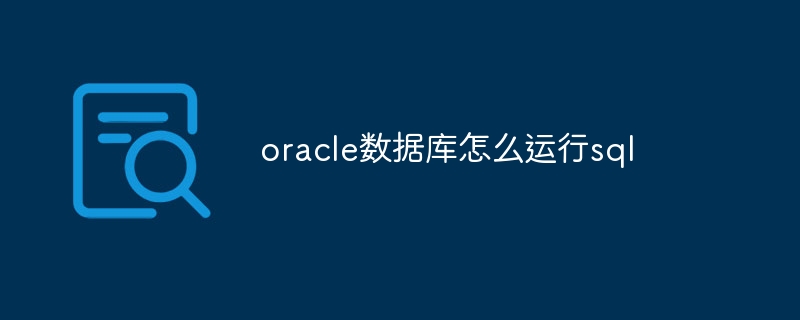How to run sql in oracle database
- 下次还敢Original
- 2024-04-07 16:39:211318browse
The steps to run SQL statements in an Oracle database include: Open the SQL Plus tool and connect to the database. Enter the SQL statement at the prompt. Press Enter to run the statement. View results, error messages, or exit SQL Plus.

How to run SQL statements
The steps to run SQL statements in Oracle database are as follows:
- Open the SQL Plus tool. SQL Plus is a command line tool provided by Oracle for interacting with the database.
-
Connect to the database. Use the following syntax to connect to the database:
<code>SQL> CONNECT username/password@database_name</code>
Where username is your username, password is your password, and database_name is the name of the database you want to connect to.
-
Enter the SQL statement. Enter the SQL statement you want to run at the SQL Plus prompt. For example:
<code>SQL> SELECT * FROM employees;</code>
- Run statement. Press Enter to run the SQL statement.
- View Results. If the statement is executed successfully, the results will be displayed in the command line window.
Additional Notes:
- End SQL statements with a semicolon (;).
- Use uppercase or lowercase letters to enter SQL statements. Oracle is not case sensitive.
- Error Message If statement execution fails, you will see an error message. Please read the message carefully as it will contain information about the cause of the error.
-
Exit SQL Plus. When you are finished with SQL Plus, exit using the following command:
<code>SQL> EXIT</code>
The above is the detailed content of How to run sql in oracle database. For more information, please follow other related articles on the PHP Chinese website!

